Best distortion pedals for metal 2025: standalone and stacked gain stages, plus 'amps in a box'
Our pick of metal-friendly distortion stompboxes from Amptweaker, Friedman, Two Notes, Ibanez and more
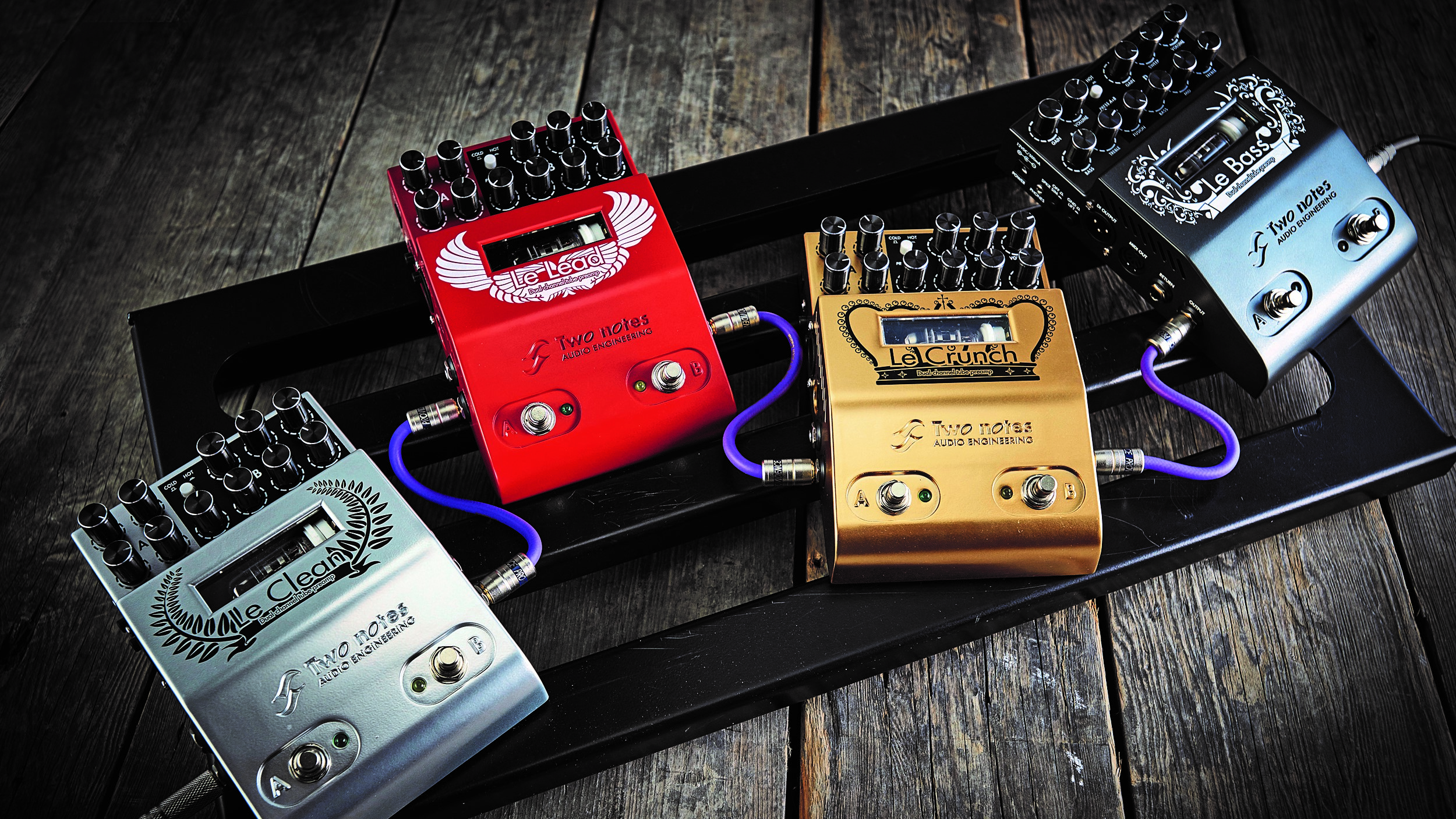
Let's be blunt – the majority of the most killer metal tones rely on tube amplification. Not everybody has the space or cash for a 5150 stack, though, and that's where this guide looking at the best distortion pedals for metal comes in.
Generally, the very best metal tones come from a good tube amplifier and a distortion pedal with a decent amount of volume boost, but we believe it is possible to get excellent metal tones from pedals. In this guide, we'll cover the best of standalone and stacked gain stages, as well as 'amp in a box' high-gain beasts.
We've included some in-depth buying advice at the end of this guide, so if you'd like to know more about metal distortion before deciding which direction to go, click the link. If you'd rather get to our product choices, then keep scrolling.
Best distortion pedals for metal: Guitar World’s choice
If you already own a decent tube amplifier then the Ibanez Tubescreamer Mini is a great choice. Used as a boost it can push most metal–voiced amps into rich saturation, and there's a reason it's so popular when used in this way. If you want a standalone distortion pedal then the best option is the Hamstead Odyssey, for open, classic heavy rock tones.
It's not cheap, but as a stand-alone preamp option the Two Notes Le Lead is hard to beat. Not only will it work in tandem with a real power amp, but it can be paired with other Two Notes kit like virtual power amps and cab sims to make compact fly rigs or silent recording set-ups.
Best distortion pedals for metal: Product guide
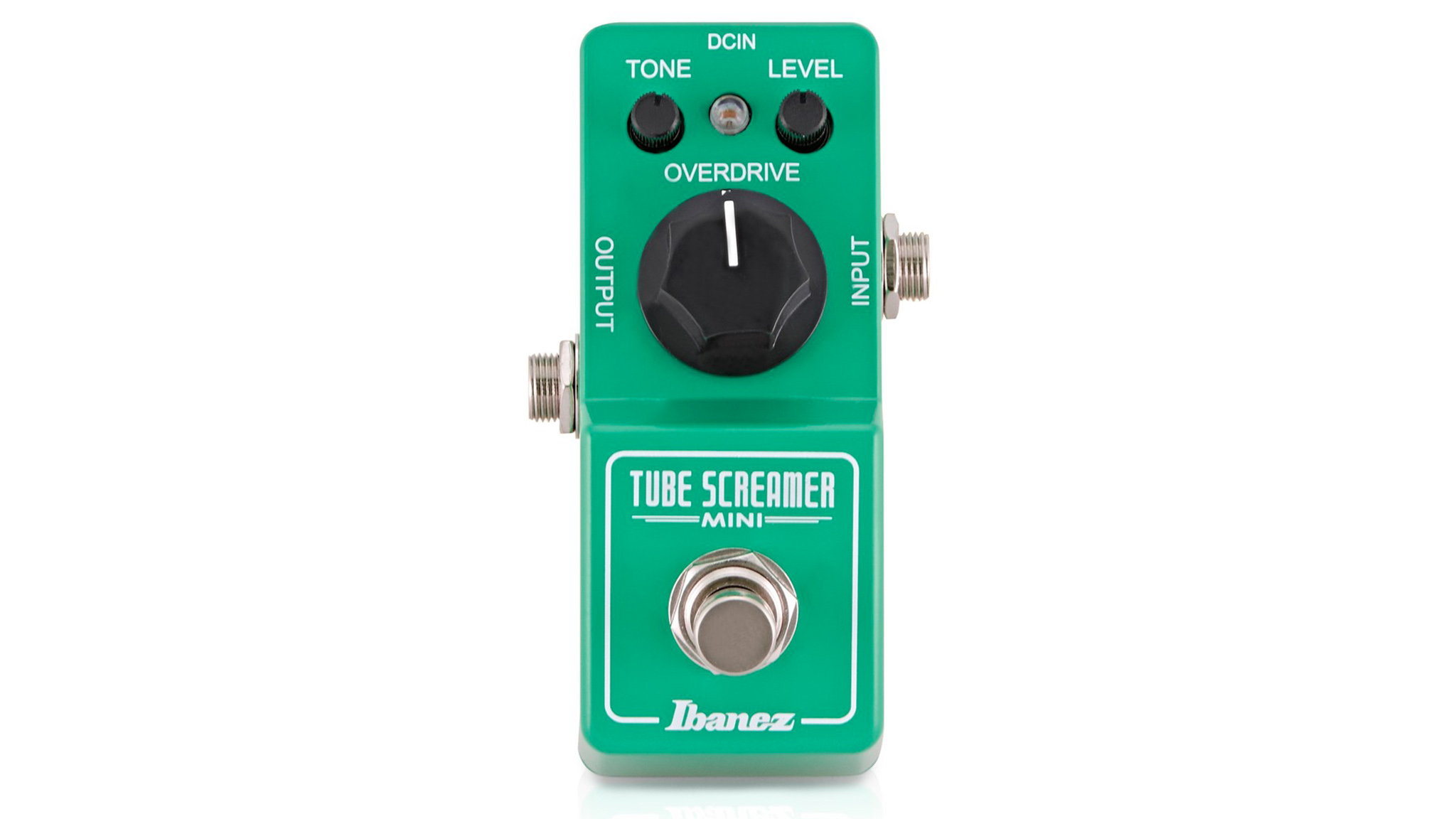
1. Ibanez Tubescreamer Mini
Our expert review:
Specifications
Reasons to buy
Reasons to avoid
The Ibanez Tubescreamer has long been the tool of choice for getting tight, compressed metal tones. Though it is an excellent drive in its own right, its chief attraction here is as a boost.
With the gain all the way down and the level up, it can be used as such. Meanwhile, its distinctive 'mid hump' means that it pushes the mids of any amp following it in an instantly recognizable way.
The Mini is both the most affordable Tubescreamer yet and the most compact. What's not to like? Still not sure? Check out our pick of Tube Screamer clones.
Read the full Ibanez Tube Screamer Mini review
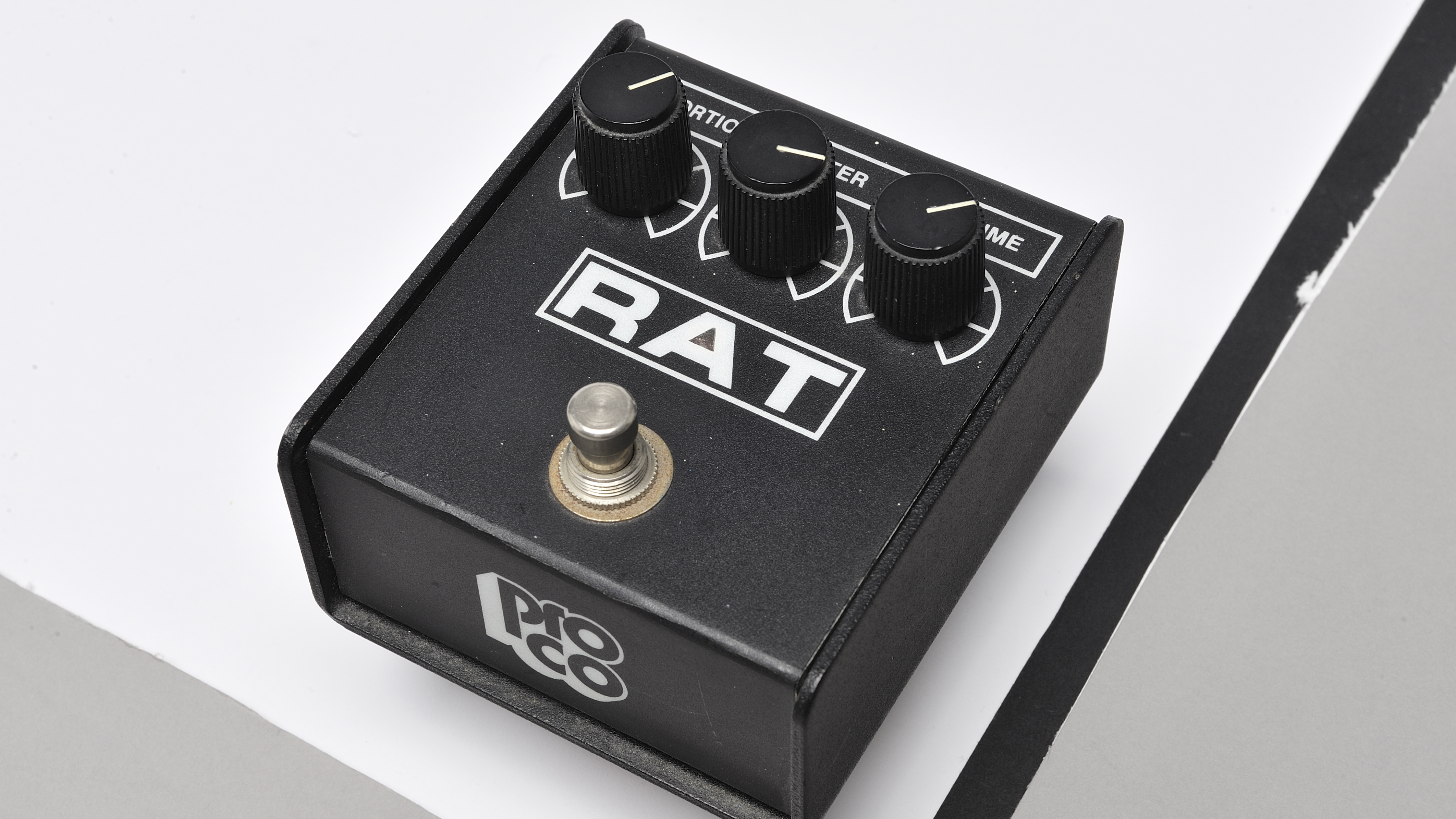
2. ProCo RAT
Our expert review:
Specifications
Reasons to buy
Reasons to avoid
The ProCo RAT was one of the the first hard-clipping distortion pedals, and it remains an excellent and affordable option for everything from punk and grunge to modern metal.
Though it can be uncontrollable at higher gain settings, rolling the clipping back reveals an excellent boost. The volume gain on tap is in a similar range to the Tubescreamer.
This means it's more than adequate to smash a guitar amp into saturation. Not only that, but the filter is more effective for some styles of music than that found on other distortion pedals.
As a result it's effective both as a standalone clipping stompbox, or as a stackable gain stage.

3. Hamstead Soundworks Odyssey
Our expert review:
Specifications
Reasons to buy
Reasons to avoid
Another amp builder turned pedal maker, the Odyssey is the highest-gain pedal Hamstead do.
It's an 'amp in a box' style pedal that starts at low gain and runs all the way up to modern alternative metal, with amp-like EQ. It also has settings for changing the position of the EQ stage as well as the type of clipping. Most impressively, pretty much the whole sweep of the gain knob delivers usable tones.
It's not voiced perfectly for modern metal, but into the right amp it can be serviceable for the djent crowd. However, it works best for the kind of hot-rodded tones associated with bands like Tool or A Perfect Circle.
As an added bonus, it's got enough volume boost on tap to make a passable boost pedal in a pinch.
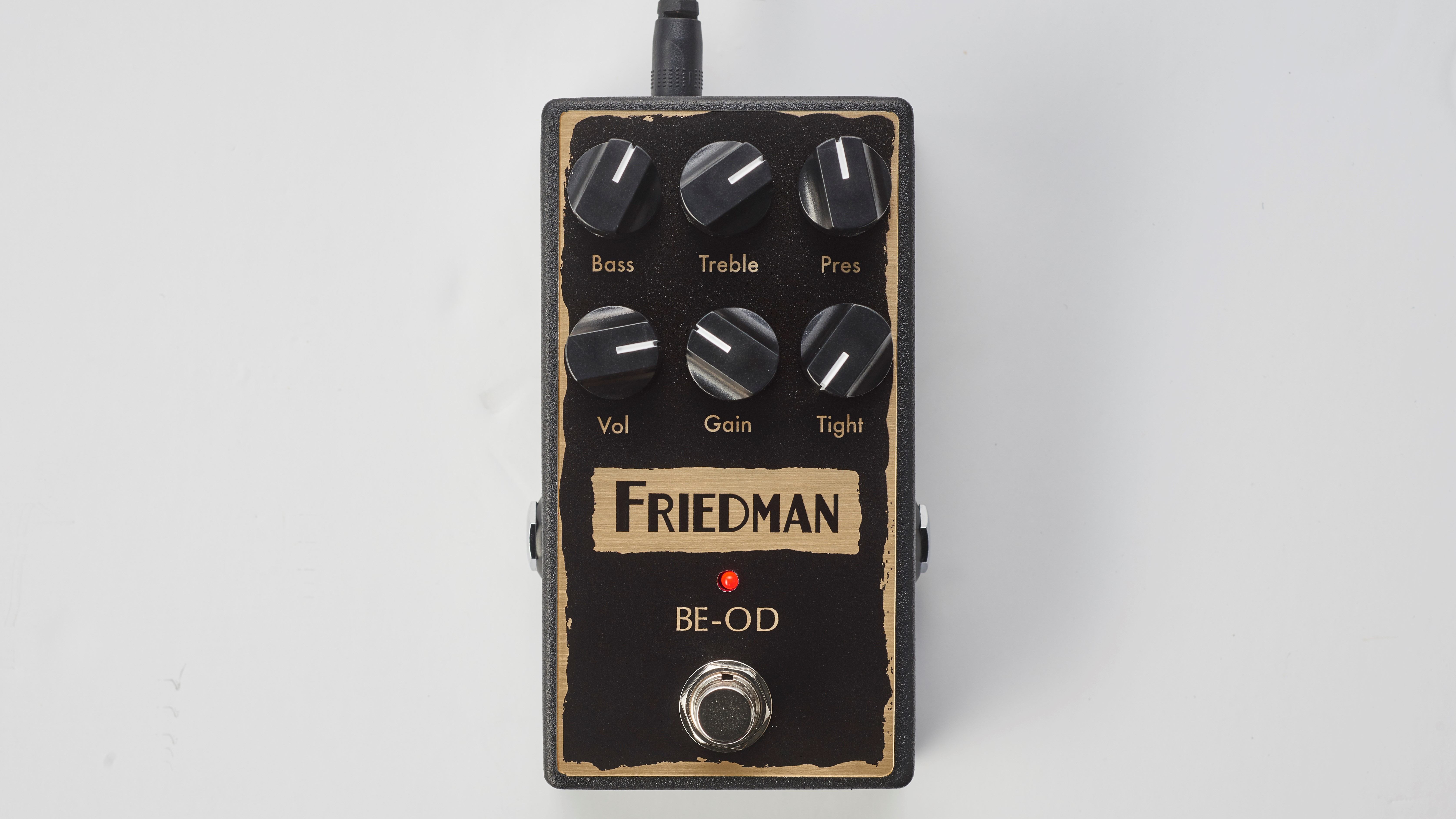
4. Friedman BE-OD
Our expert review:
Specifications
Reasons to buy
Reasons to avoid
Known mainly as an amp builder, the BE-OD is an attempt to distill the character of Friedman's BE-100 amp into a pedal.
As the design suggests, it's a Marshall-voiced pedal, with an amp-like three band EQ and wide gain range.
Should you want to alter the gain range further, there's an internal trimmer, but it's unlikely you'll need to move it much past 12 o'clock.
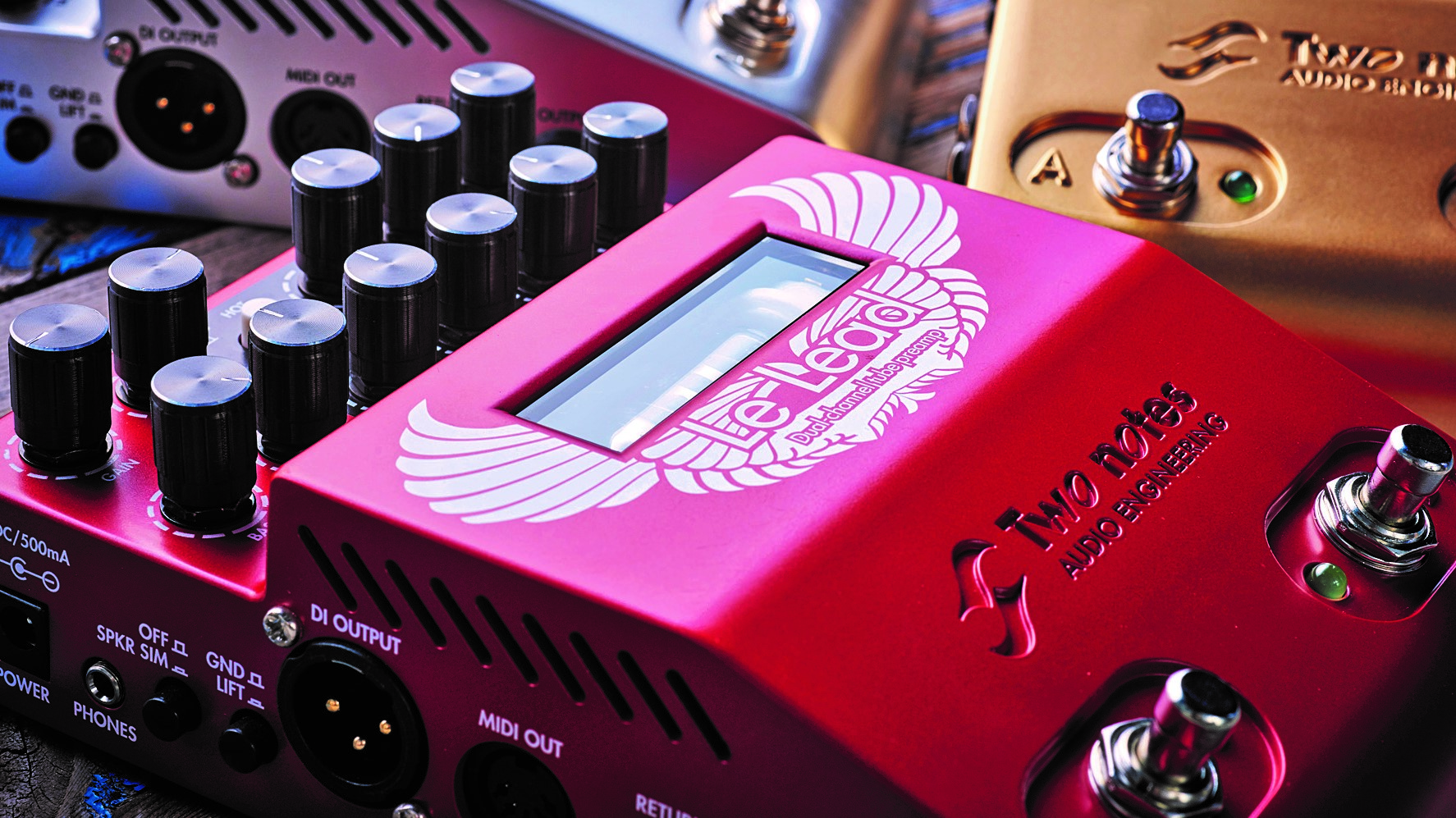
5. Two Notes Le Lead
Our expert review:
Specifications
Reasons to buy
Reasons to avoid
The Le Lead is a modern, high-gain tube-based preamp with built-in speaker simulation. As it's based around a tube, even at lower volume and gain settings it has a bit more richness than your average 'amp in a box' distortion.
Its control layout recalls that of a real amplifier, with channel control between a clean and gain channel. Both channels have EQ controls, though the lead channel EQ is more powerful. It's also got a parallel blend, which is particularly useful for adding a clean blend to higher-gain distortion tones.
As you'd expect, it works as a standalone preamp, and even has a built-in speaker sim. However, for silent recording or fly-rig gigging, it works best when paired with other Two Notes units like the CAB or Torpedo rack.
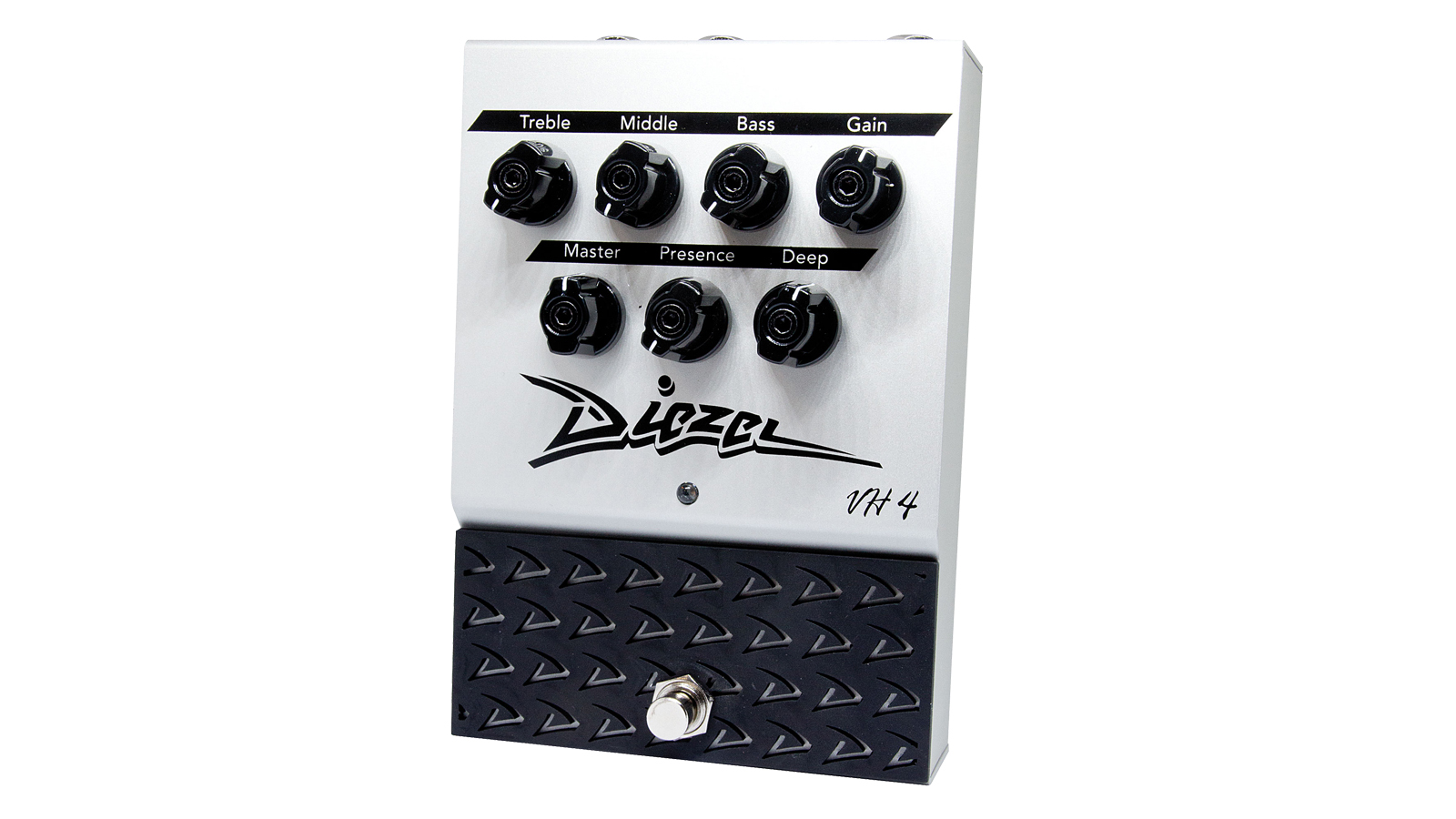
6. Diezel VH4 2 Pedal
Our expert review:
Specifications
Reasons to buy
Reasons to avoid
The VH4 pedal is Diezel's attempt to distill its flagship amp into a compact pedal. The distortion tones on offer are appropriately massive, but the real USP here is the EQ section. Alongside a three-band EQ, it also has a presence and deep control, offering greater tone shaping to, for example, get better control over palm mutes.
Crucially, version two of the VH4 brings a second channel, meaning even more flexibility and a truer preamp experience.
As you'd expect, this can be used as a standalone distortion or run as a preamp into a power amp.
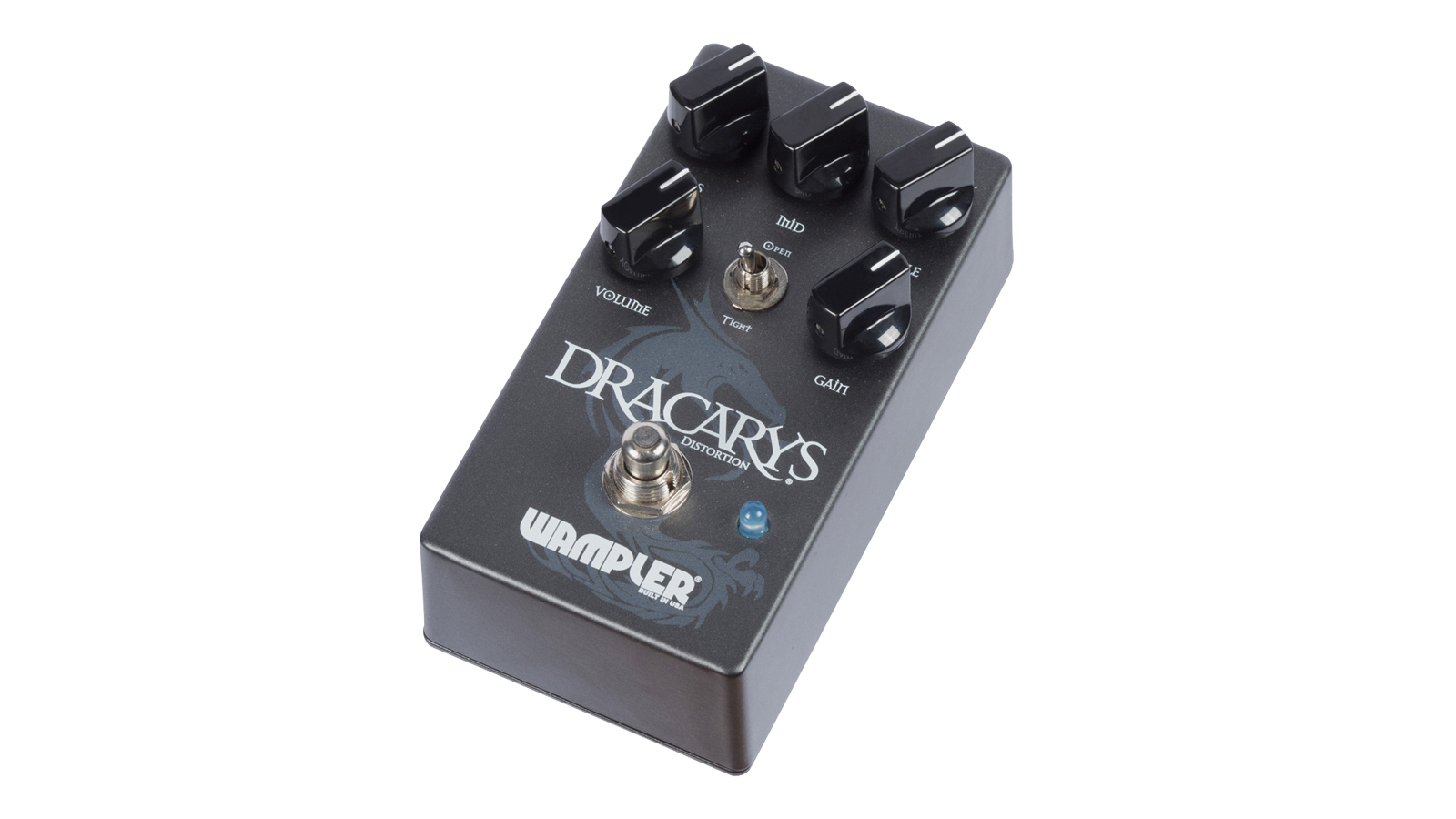
7. Wampler Dracarys
Our expert review:
Specifications
Reasons to buy
Reasons to avoid
The Wampler Dracarys is apparently modelled on the classic Marshall Shredmaster. It certainly has similar characteristics to the original – a distinctive, spiky clipping tone and amp-like EQ.
The two drawbacks of the Shredmaster are also found here, however. Firstly, that the voicing is very much an ’80s-style metal lead, and less suitable for modern rhythm tones. Secondly, that there isn't a huge amount of volume gain on tap, compared to other pedals.
That said, the Wampler version does feel more powerful than the original in terms of level boost, making it more suitable for pushing amps.
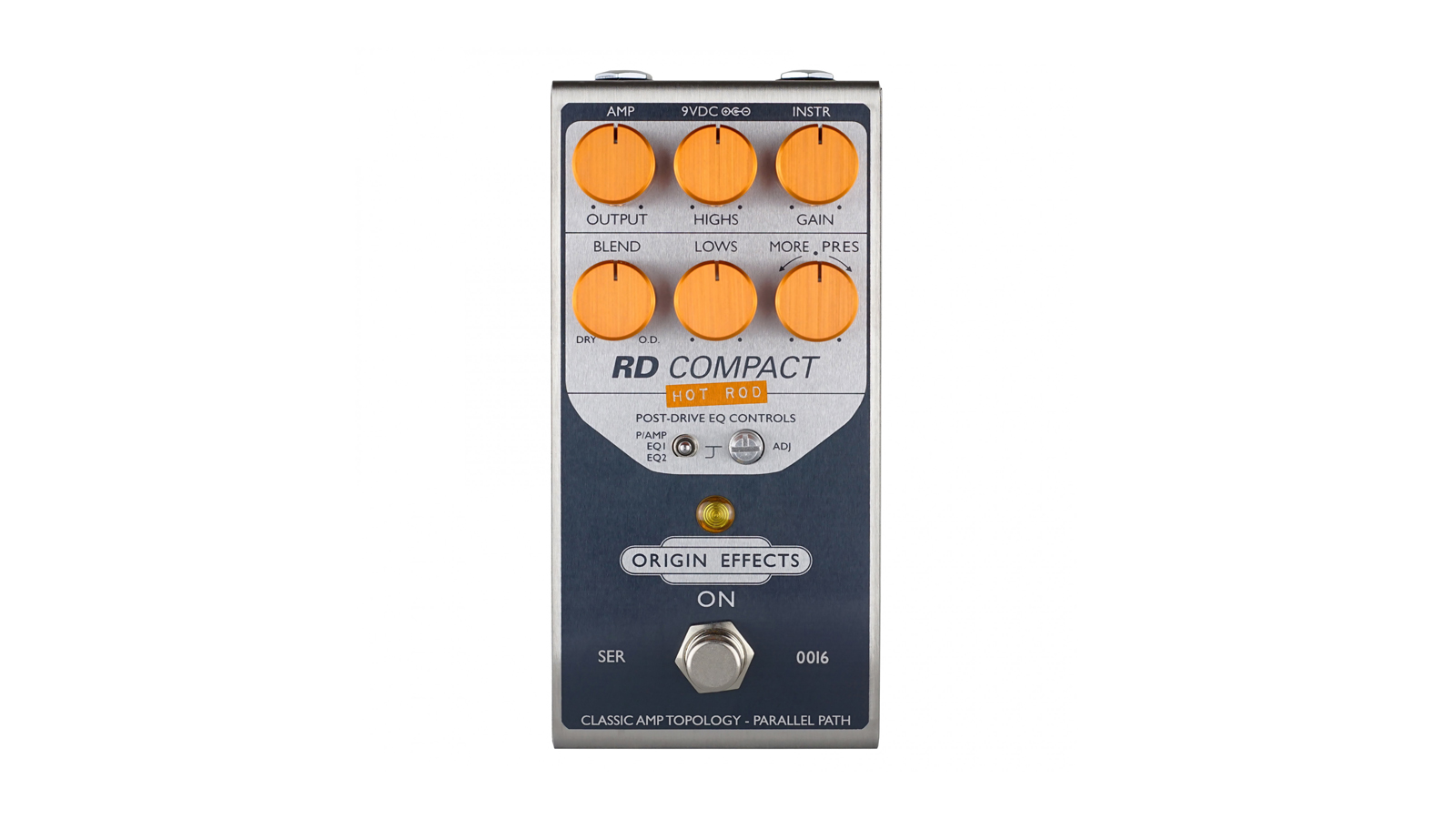
8. Revival Drive Hot Rod Compact
Our expert review:
Specifications
Reasons to buy
Reasons to avoid
A new, slimmed-down version of the Revival Drive Hot Rod, the Compact has all the key features of the larger unit, including a powerful EQ section.
It also has an EQ trimmer that allows you to change the voicing of the pedal depending on what type of amp you're running into – a Fender-style, Marshall-style or flat power amp.
As you'd expect from Revival Drive, it's a meticulously-engineered 'amp in a box' that is richer than your average distortion stompbox. It aims to emulate the hot-rodded amps used in ’80s hard rock and early metal, and is particularly good for thick rhythm tones.
Like the company's other compact units, it's got a two-band EQ with an amp-like presence control, as well as a clean blend. The gain range is much wider than the Revival Drive Compact, but still noticeably less than some of the other units on this list.
Read the full Revival Drive Hot Rod Compact review
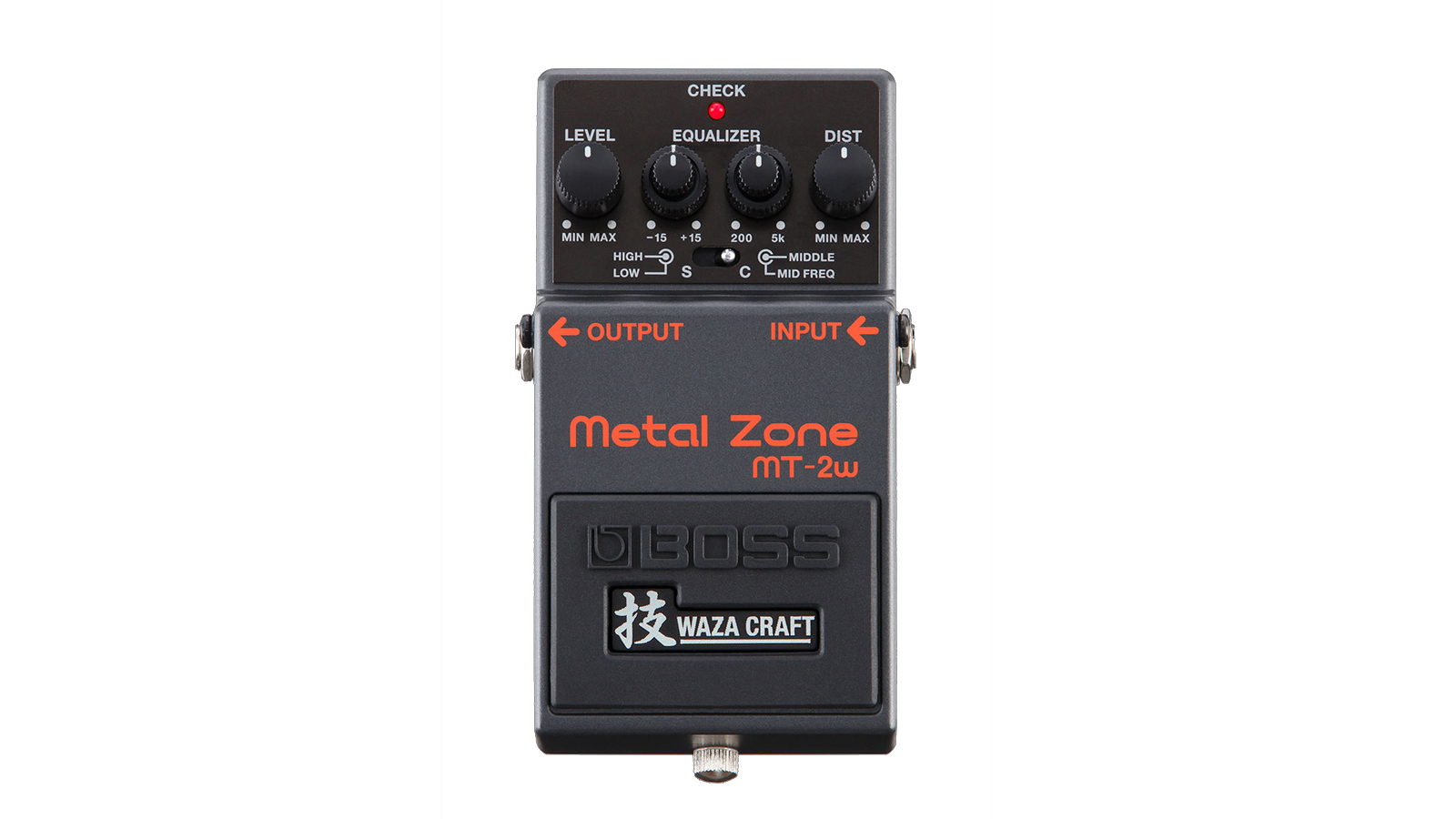
9. Boss MT-2W Metal Zone Waza Craft
Our expert review:
Specifications
Reasons to buy
Reasons to avoid
Loved and hated in equal measure, the Boss Metal Zone is nevertheless one of the most powerful and articulate metal distortions ever made.
While its gain range is way too wide to be useful, at more moderate gain settings it's powerful and punchy. Moreover, it has one of the best EQs of any compact pedal. Its EQ is so powerful, in fact, that some players like Ola Englund have shown it can be used as a standalone preamp into a poweramp.
However, this EQ is also its biggest drawback. Many players find the EQ confusing, and simply end up with a fizzy or thin tone, rather than the roaring, percussive chug the Metal Zone can deliver.
The Waza Craft reissue adds a Custom mode, with voicing more suitable for modern metal, but annoyingly no noise gate – probably the most requested feature from users of the original.

10. Amptweaker Tight Metal II
Our expert review:
Specifications
Reasons to buy
Reasons to avoid
James Brown, the designer of the Peavey 5150, came up with the Amptweaker line as an 'amp in a box' solution for players after an articulate, amp-like gain pedal. The Tight Metal is, as the name suggests, the highest-gain entry in the line.
Its latest iteration has lost its distinctive case, but none of its tone. The built-in gate may not be much to write home about, but even with only a simple trio of controls the pedal is punchy and individual notes well-defined.
It's ideal for modern metal, but at lower gain levels with the tight control set to fat, it can cover many hard rock rhythm tones too.
Best distortion pedals for metal: Buying advice

Choosing the best metal distortion for you
You can trust Guitar World
A common mistake made by new guitarists is to buy a certain red-and-black pedal, put all the dials to max and expect a great metal tone. It's no wonder that many leave disappointed.
In fact, many killer metal tones use a mid gain setting, whether from a pedal or amplifier. The key is usually gain staging.
A lot of classic metal tones come from amplifiers pushed to the limit in terms of volume. The tube saturation that results is key to most classic metal tones, from Black Sabbath to Dillinger Escape Plan.
More recently, tech metal bands have leaned on modelling units like the Axe-FX series. Even so, many of the models used, like the FAS Modern, are simply hot-rodded emulations of classic metal amps, often with a boost in front.
Using a boost then is often key to getting a brutal metal tone. This stacking of gain stages results in thicker, punchier saturation. A common trick is to turn the gain all the way down on an Ibanez Tubescreamer, and turn the level all the way up. Into a tube amp, even at a mid-gain setting, this extra kick will result in rich, tight tube saturation.
This gain-stacking approach is why many metal pedals try to emulate the sound of an amp stack pushed into saturation. As a result, many metal distortions feature more than one gain stage in their circuit. This is an attempt to gain-stage like a boost in front of an amp. Others specifically model a preamp, then EQ section, then power amp with their multiple stages. Pedals like this are often referred to as an 'amp in a box.'
Which brings us on to the final piece of the puzzle – EQ. The reason that the 5150, JCM800 or Mesa Mark series have become classic metal amps is their EQ profile. Not only is the profile, or voicing, of an amp or pedal important, but also what control the player has over the EQ.
How we choose products
At Guitar World, our team of experts comprises seasoned musicians, many of whom have played in metal bands of varying genres and questionable quality over the years. We have played and tested numerous guitar products, including an unimaginable amount of guitar pedals.
Many of us are die-hard metal enthusiasts, so we understand the importance of achieving the crushingly heavy guitar tone. We leverage our extensive experience using guitar pedals in live performances, studio recordings, and rehearsals to identify the best products for our guides.
To curate our list of top distortion pedals for metal, we utilize a combination of practical experience, user feedback, and in-depth discussions with our editorial team to reach a consensus. We evaluate factors such as pricing, features, ease of use, and durability to ensure we showcase the very best gear available on the market.
As metal guitar players ourselves, we appreciate the value of having the right equipment to create the perfect sound. Therefore, we are committed to providing reliable and knowledgeable recommendations to assist metal players in finding the ideal distortion pedal to suit their specific needs and preferences. Our ultimate aim is to help empower metal players to unlock their dream tone with the best distortion pedals for metal on the market.
Find out more about how we make our recommendations and how we test each of the products in our buyer's guides.
Related buying guides
- Raise hell with the best metal guitars
- Get all wobbly with the best tremolo pedals
- Upgrade your axe with the best pickups for metal
- Or tone it down with the best overdrive pedals
- Save a bag or two with the best Klon clones
- Turn it up while keeping it down with the best headphone amps for guitar
- Lose your head in the best headless guitars
- Play it loud with the best punk guitars
Get The Pick Newsletter
All the latest guitar news, interviews, lessons, reviews, deals and more, direct to your inbox!
Alex Lynham is a gear obsessive who's been collecting and building modern and vintage equipment since he got his first Saturday job. Besides reviewing countless pedals for Total Guitar, he's written guides on how to build your first pedal, how to build a tube amp from a kit, and briefly went viral when he released a glitch delay pedal, the Atom Smasher.











